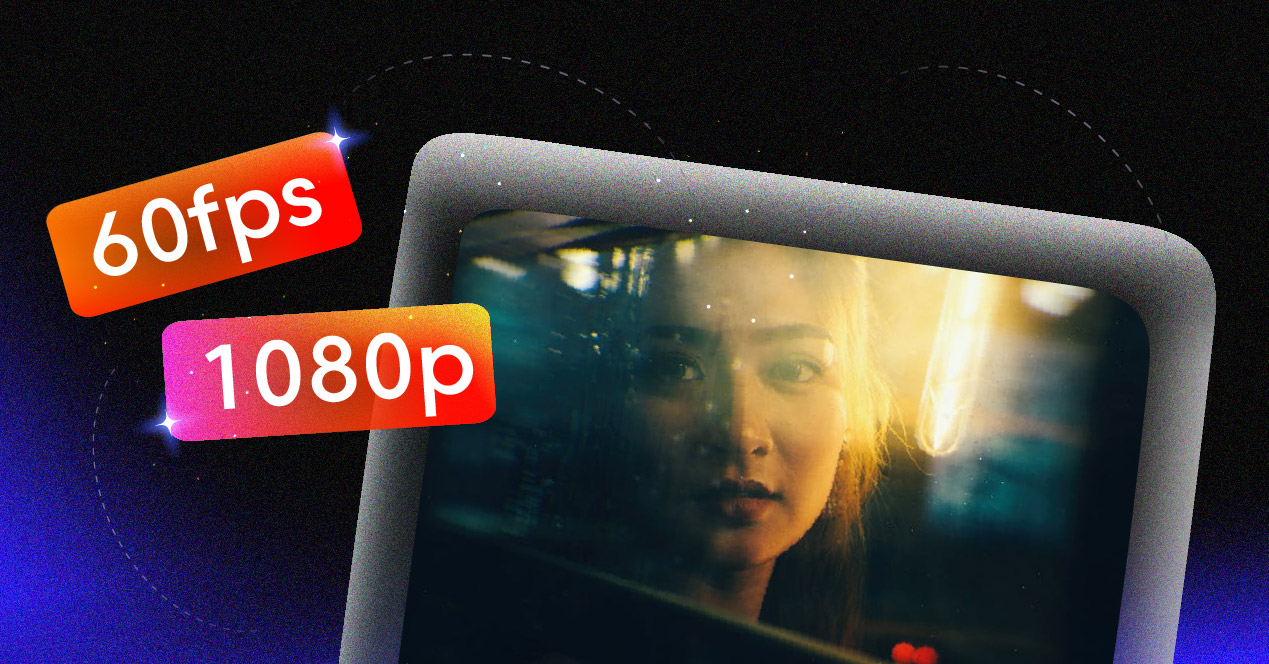In a world where audio quality can make or break a streaming experience, the FLAC codec stands as a pivotal tool for content creators seeking pristine sound without compromise. By reducing digital audio file sizes by approximately 50% to 70% while maintaining perfect quality, FLAC has become a preferred choice among audio professionals worldwide.
Developed by the Xiph.Org Foundation, the Free Lossless Audio Codec (pronounced “flack”) has revolutionized how we store and transmit high-quality audio. Unlike MP3 and other lossy formats that permanently discard data, FLAC files preserve every nuance of the original audio data while still offering impressive compression.
As a streamer, your audience deserves the best possible audio experience. Whether you’re recording podcasts, streaming music performances, or creating content where sound quality is crucial, understanding how to leverage the FLAC format can significantly enhance your production value and differentiate you from the competition.
This comprehensive guide will walk you through everything you need to know about FLAC – from its technical foundations to practical applications for your streaming setup. You’ll discover why lossless compression matters, how to work with compressed FLAC files, and why this powerful audio format has become the preferred choice for audio professionals and audiophiles alike.
What is FLAC?
FLAC stands for Free Lossless Audio Codec, an audio format similar to MP3 but with a crucial difference. It uses lossless compression rather than lossy compression. This means that while FLAC files are smaller than uncompressed audio (like WAV files), they contain exactly the same audio data as the original recording.
Why Should Streamers Care about FLAC?
Imagine taking your favorite high-quality recording and shrinking it down to 50-70% of its original size without losing a single note, breath, or subtle detail. That’s the magic of FLAC. It works somewhat like ZIP works for compressing files, but it’s specifically designed for audio.
The FLAC project began in 2000 when Josh Coalson started development, with the bitstream format being finalized in March 2001. Version 1.0 was officially released on July 20, 2001. In 2003, the FLAC project joined the Xiph.Org Foundation, which is home to other free audio compression formats, including Vorbis, Theora, Speex, and Opus. Most recently, in December 2024, FLAC was formally specified as RFC 9639, solidifying its position as a standardized format.
For streamers who care about audio quality, FLAC offers several compelling advantages:
- Perfect audio quality: Unlike MP3 or AAC, which permanently discard data to achieve compression, FLAC preserves 100% of the original audio data.
- Reasonable file sizes: FLAC files typically reduce in size to 50-70% of the original audio data, making them more practical to store and transmit than uncompressed formats.
- Free and open: As an open format with royalty-free licensing, FLAC doesn’t come with the legal complications or costs of some proprietary formats.
How FLAC Audio Codec Works
At its core, FLAC is a lossless encoding of linear pulse-code modulation data. But what does that actually mean? Let’s break it down into simpler terms.
File Structure and Magic Numbers
A FLAC file begins with what’s called a magic number, “fLaC”, which identifies it as a FLAC stream. Metadata blocks follow this FLAC stream marker and then the encoded audio.
The metadata system in FLAC is quite sophisticated. It allows for storing information like:
- Technical properties (sample rate, number of samples, etc.)
- Tags for artist, album, and track information (using Vorbis comments)
- Album artwork
- Track and index points via cue sheet information
The actual audio data is divided into frames, each containing a header, data block, and CRC16 checksum for error detection. Each frame is coded separately from the others, which helps with seeking and streaming capabilities.
The Encoding Process: Turning Sound into Data
The FLAC encoder employs a multi-stage approach to compress audio data:
- The input audio is split into blocks, with each channel encoded as a separate subblock for stereo streams.
- The encoder attempts to find a mathematical approximation of each block using either a simple polynomial or linear predictive coding.
- The difference between this approximation (the predicted signal) and the actual input (the raw signal) creates what’s called a residual signal.
- This residual signal undergoes residual coding using Rice coding, which efficiently compresses it.
What makes this approach so effective is that describing the mathematical approximation, along with the encoded residual, often takes up significantly less space than the original PCM (Pulse-Code Modulation) data.
For stereo streams with two channels, the encoder may use joint encoding. This transforms the audio into a side channel (the difference between the left and right channels) and a mid channel (their sum), which can sometimes be more efficient than encoding the channels separately.
Decoding: Bringing the Music Back
The decoding speed of FLAC is one of its standout features. The process simply reverses the encoding steps:
- The compressed residual is decoded.
- The mathematical approximation is calculated based on the stored parameters.
- Adding the residual to the calculated waveform recreates the original signal exactly.
Because FLAC is optimized for decoding speed at the expense of encoding speed, playback is highly efficient, perfect for streaming applications where real-time performance is crucial.
Compression Levels and File Size
The FLAC codec offers nine compression levels (0-8), with higher numbers resulting in smaller files at the cost of longer encoding process times. Level 5 is the default and offers a good balance between compression ratio and encoding time.
It’s worth noting that regardless of the compression level, the decoded audio remains identical to the original. The levels only affect how efficiently the data is packed and how long it takes to encode.
A benchmark has shown that while decoding speed remains consistent across compression levels, the encoding speed drops significantly at higher levels, with diminishing returns in terms of file size reduction beyond level 5.
Implementation and Software Support
The FLAC project includes a reference implementation called libFLAC, which serves as the core encoder and decoder library. This implementation is available as free software under BSD licensing (for the libraries) and GNU GPL (for command-line tools).
Along with libFLAC, the project provides:
- libFLAC++: An object-oriented C++ wrapper around libFLAC
- FLAC: A command-line program for encoding and decoding
- MetaFLAC: A command-line tool for editing metadata blocks in FLAC files
The reference implementation compiles on numerous platforms, including various Unix and Unix-like systems (including Linux), Windows, BeOS, and OS/2. There are build systems for Autoconf/Automake, MSVC, Watcom C, and Xcode, making it accessible across various development environments.
Hardware and Operating System Support
FLAC enjoys increasingly widespread support across major operating systems:
- Windows 10 and later include native support for FLAC files
- Mac OS High Sierra (10.13) and later support FLAC
- Android has supported FLAC since version 3.1
- iOS 11 introduced FLAC support (depending on hardware)
When it comes to containers, FLAC can be encapsulated in:
- Standard FLAC container (.flac)
- Matroska (.mka, .mkv)
- Ogg FLAC (.oga)
- Core Audio Format (.caf) on Apple platforms
While hardware support for FLAC in portable devices and home stereo systems isn’t as universal as MP3, the situation has improved dramatically in recent years. Many modern audio players, receivers, and even car stereo systems now support FLAC playback.
FLAC vs. Other Audio Formats
What makes FLAC stand out among other formats and other lossless codecs? Let’s compare:
FLAC vs. Lossy Formats (MP3, AAC)
While lossy formats like MP3 achieve greater compression by permanently discarding data deemed less audible, FLAC preserves 100% of the audio data. This makes FLAC ideal when:
- You need to archive audio in perfect quality
- You plan to edit or process the audio further
- You want to avoid quality degradation over multiple generations of processing
FLAC vs. Other Lossless Formats
FLAC competes with other lossless formats like Apple Lossless (ALAC), WavPack, and Monkey’s Audio. The technical strengths of FLAC compared to these other lossless codecs include:
- Fast and efficient decoding speed, regardless of compression level
- Strong streaming capabilities
- Open, patent-free design
- Robust metadata system
- Widespread software support
While general-purpose compression algorithms like those used in ZIP might reduce CD-quality audio by 10-20%, FLAC typically achieves 40-50% reduction by leveraging specific characteristics of audio.
Practical Applications for Streamers
As a streamer, how can you best utilize FLAC in your workflow? Here are some practical applications:
1. Archiving High-Quality Recordings
If you record podcasts, music performances, or other audio content, storing your masters as FLAC files ensures you preserve the highest possible quality while still conserving disk space. If the original CD or recording device is ever lost or damaged, your FLAC archive guarantees you can recover an exact duplicate of the original data.
2. Future-Proofing Your Content
As bandwidth increases and storage costs decrease, the demand for higher-quality audio will continue to grow. By maintaining FLAC masters of your content, you ensure you can distribute higher-quality versions in the future without needing to re-record.
3. Lossless Editing and Processing
When editing or processing audio, starting with FLAC files means you’re working with the highest quality source material. This gives you more flexibility in post-production and ensures any derived formats (like MP3 for distribution) are generated from the best possible source.
4. Creating Perfect Copies of CDs
If you use CDs as source material, FLAC combined with a cue sheet allows you to create perfect copies of the original CD, including precise track and index points. This is invaluable for music streamers who need to preserve album continuity, hidden tracks, or precise timing.
Best Practices for Working with FLAC
To get the most out of FLAC in your streaming workflow, follow these best practices:
- Use appropriate compression levels: For archiving, level 5 (the default) offers a good balance of compression and encoding time. If storage space is at a premium and you don’t mind longer encoding times, consider levels 6-8.
- Preserve metadata: Utilize FLAC’s robust metadata system by including comprehensive information about your recordings. This will make organization easier and enhance the listener experience.
- Consider format conversion needs: While FLAC is perfect for archiving and production, you may need to convert to more widely supported formats like MP3 for certain distribution channels. Keep this in mind when designing your workflow.
The Future of FLAC
With its recent standardization as RFC 9639, FLAC has secured its place in the audio ecosystem for years to come. The FLAC format has proven remarkably stable—the basic bitstream format has remained unchanged since 2001, ensuring excellent backward compatibility.
Recent developments, such as FLAC 1.5.0 (released in February 2025), have introduced multi-threaded encoding, bringing significant performance improvements to the encoding process. This makes working with FLAC more efficient than ever, especially on modern multi-core systems.
The standardization process was driven specifically with archival and preservation in mind, and the U.S. National Archives and Records Administration now lists FLAC as a preferred format for digital audio preservation.
Why FLAC Matters for Your Streaming Quality
As a streamer committed to quality, embracing FLAC can significantly elevate your audio production. While your final distribution format might still be lossy for bandwidth reasons, starting with and archiving in FLAC ensures you’re always working from the highest quality source.
The FLAC codec offers a rare combination of perfect quality, reasonable file sizes, and open accessibility. It’s the format of choice for audio professionals, archivists, and audiophiles for good reason.
By understanding and incorporating FLAC into your workflow, you’re making an investment in quality that your audience will appreciate, even if they don’t consciously recognize it. Superior audio quality creates a more immersive, professional experience that keeps listeners engaged and coming back for more.
Ready for a Seamless Streaming Experience?
If you’re serious about delivering the best possible audio quality in your streams, Castr has you covered. Our platform supports high-quality streaming that preserves the audio fidelity you work so hard to achieve.
With Castr, you can:
- Stream in high quality to multiple platforms simultaneously
- Maintain excellent audio fidelity throughout your broadcast
- Customize your streaming experience with professional-grade tools
- Reach more viewers with reliable, high-performance delivery
Best of all, you can try Castr completely risk-free with our 7-day free trial—no credit card required. Experience the difference that professional-grade streaming technology can make for your content.
Start your free trial today and discover why content creators who prioritize quality choose Castr for their streaming needs.





![Top 10 Best Vimeo Alternatives in 2025 [Expert Picks]](https://castr.com/blog/wp-content/uploads/2025/11/Best-Vimeo-Alternatives.jpg)


